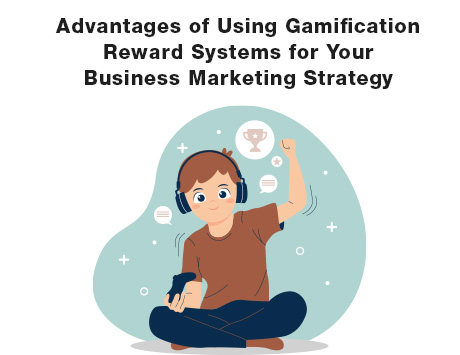Gamification brings a competitive and playful element to any business’s marketing strategy. Read more to discover benefits that come with using a reward system for your business.
The use of gamification as a way to optimize a marketing strategy is becoming increasingly popular, especially in the field of digital marketing. A content marketing campaign can be more attractive and interactive if we introduce elements based on games, e.g. rewarding users for a certain action or activity. This way we build an emotional connection that is so sought after with the audience and, in the long term, can translate into loyal customers to the brand. How is gamification used, and what are the marketing advantages of using reward systems?
What is gamification?
It was Nick Pelling who coined the term “gamification” in 2004 for his consulting firm Conundra. In 2007, the Bunch ball firm was the first to offer this type of game dynamics for companies as a service. Gamification is a game mechanism – It consists of applying the dynamics and concepts that are typical of games to different areas such as education, marketing, business, etc.
Gamification is also the perfect way to take advantage of that predisposition that people have towards competition and play, to turn certain tasks into something more fun. In addition, it can be used with the aim of creating customer loyalty.
Gamification should not be confused with advergaming, which is the development of games for an advertising campaign. These game-based advertising campaigns do not make the process more entertaining.
Gamification for marketing strategy: Advantages and Benefits
The most common forms of gamification for marketing strategies are achievement and reward systems, such as Foursquare. The display of progression is also widely used, such as the percentage bar of profiles on LinkedIn or Info jobs.
Other cases are levels, as occurs in some discussion forums, that reward user loyalty by assigning roles. In the Mktfan.com content aggregator, for example, are not only the articles that users upload voted upon but also the ones that make the most comments, the ones that upload the most topics or the ones that have the most articles published, among other things.
Continued interaction between users and brands
Getting users to interact continuously is one of the goals of brands. In fact, there are many who seek to share more content to capture the attention of users and generate more engagement and conversions. This can be achieved thanks to gamification.
We do not stop seeing how products that use these types of methods come to the market, such as sports applications that use game methods to track the movements of their users. For example, in 2012, Nike launched its FuelBand, a bracelet that allows you to monitor the number of steps and exercise that the user performs and add the data in the form of a scoring system that counts all movements. In addition, it has a social element, so that users can compete with each other, or encourage their friends to start in the world of sports. Proposing challenges or challenges makes the wearers of this type of bracelet more motivated to play sports.
Users can unlock achievements, run competitions, or share their progress, creating ongoing engagement with the brand and product.
Not only that, but gamification in cases like this makes certain tasks, such as exercising, livelier, and more interesting.
New promotion opportunities
It is common in digital marketing to use gamification as an effective way to launch new promotions or encourage purchases through discounts. For this, point and reward systems are usually used. In this way, customers earn points for each product they buy, and, upon reaching a certain amount, they receive a reward in the form of a discount or gift.
The Enjoybox uses a system of this type. After each monthly box, they send a survey to users to evaluate the products received. With this evaluation, points are obtained that can then be exchanged for discounts on the following orders. If 100 is reached, the next box would be free.
Customer loyalty
Nescafé has recently launched its Members Club Award, the new loyalty program. Users, by entering the codes of the coffee boxes, receive points that they accumulate, and that leads to getting gifts.
One of the reasons that gamification can be good for a business is because it helps meet the goal of customer loyalty, as well as attracting new users.
Make a boring task more interesting
In the field of education, gamification helps make the lessons addictive and fun. Applications like Duolingo keep coming, with which learning languages can even hook our thanks to the fact that it includes elements such as lives, streak tracking, levels, points, time trial, etc.
Apps and startups that use gamification and serve to make promotions do not stop emerging. This is the case of Light, a tool that uses game methods to make users more sustainable. The company already has closed agreements with various brands to offer users interesting challenges and prizes.
Gamification has come to the world of marketing to stay, so we will have to be on the lookout to see what direction it takes in the future and how it surprises us.







